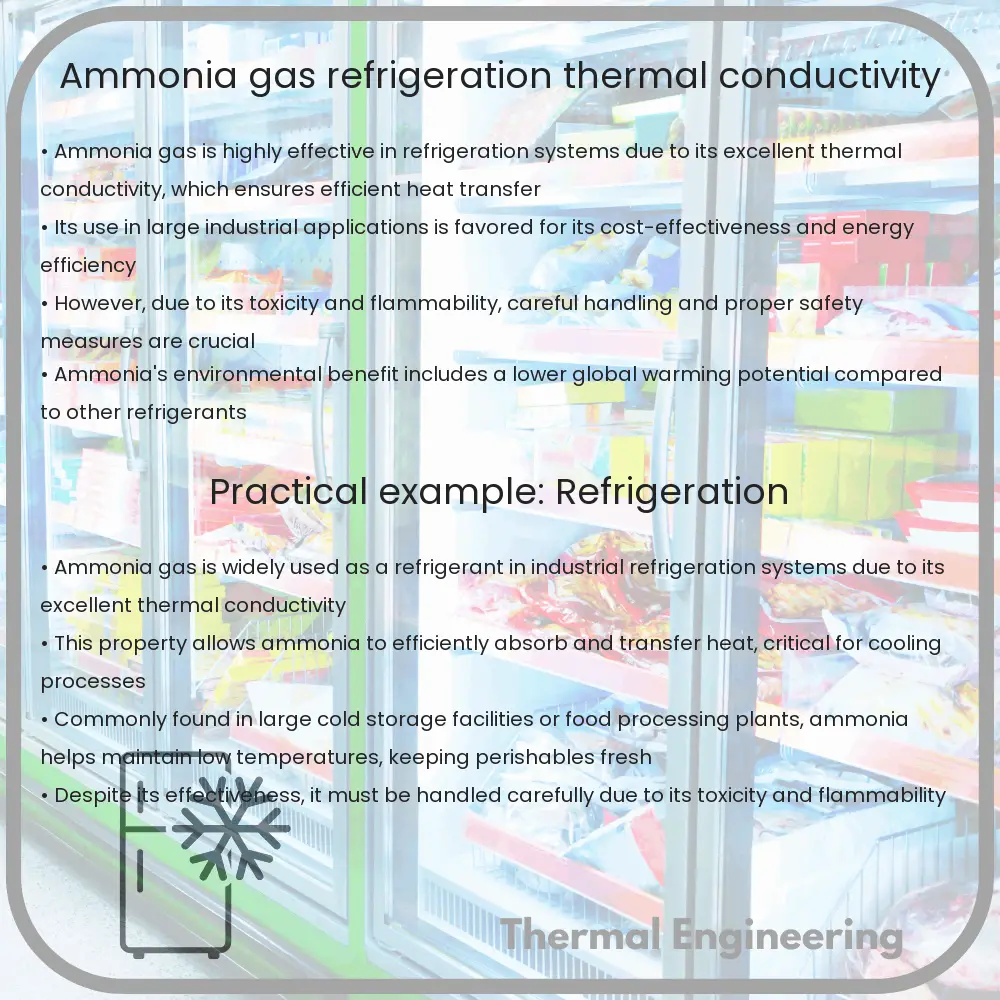Learn about ammonia gas (NH3), its use as a refrigerant in industrial systems, and its thermal conductivity properties.

Understanding Ammonia Gas in Engineering: Refrigeration and Thermal Conductivity
Ammonia gas, often simply known as ammonia, plays a crucial role in industrial refrigeration. Its chemical formula is NH3, and it is known for its sharp, pungent odor. This colorless gas is used in a variety of industrial applications thanks to its outstanding thermal properties. In this article, we explore the use of ammonia in refrigeration systems and delve into its thermal conductivity properties.
Ammonia as a Refrigerant in Industrial Systems
Ammonia has been a popular refrigerant in industrial applications for over a century. One of the main reasons for its widespread use is its high energy efficiency, which significantly reduces operating costs. Here are several key attributes that make ammonia suitable for use in refrigeration:
- Efficiency: Ammonia has a high latent heat of vaporization. This means that a small amount of ammonia can absorb a large amount of heat when it vaporizes. As a result, ammonia refrigeration systems require less ammonia to achieve the same cooling effect as systems using other refrigerants.
- Eco-friendliness: Ammonia does not deplete the ozone layer and has zero global warming potential, making it one of the most environmentally friendly refrigerants available.
- Cost-effectiveness: Ammonia is relatively inexpensive to produce and is abundantly available, which keeps the operational costs of refrigeration systems low.
However, there are safety concerns associated with the use of ammonia due to its toxicity and flammability. Proper safety protocols and system designs are crucial to safely utilize ammonia in refrigeration systems.
Thermal Conductivity of Ammonia
The ability of a substance to conduct heat is quantified by its thermal conductivity. Ammonia’s thermal conductivity plays a significant role in its effectiveness as a refrigerant. At atmospheric pressure and 0°C, the thermal conductivity of ammonia is approximately 0.0223 W/m∙K, which is higher than that of many other refrigerants. This property allows ammonia to transfer heat more efficiently, enhancing the effectiveness of the refrigeration systems in which it is used.
Applications of Ammonia in Refrigeration
Ammonia is primarily used in large commercial and industrial refrigeration systems. Here are some of its common applications:
- Food industry: Ammonia is extensively used in the food industry for freezing and storing meat, dairy products, and frozen goods. Its excellent refrigeration properties help in maintaining the quality and freshness of perishable goods.
- Ice plants: Ammonia-based systems are commonly used in ice making, especially in large scale and industrial settings.
- Chemical industry: Large chemical manufacturing plants utilize ammonia refrigeration to maintain low temperatures required in various chemical processes.
In conclusion, ammonia’s favorable thermal conductivity and high efficiency make it a vital component in industrial refrigeration despite its potential hazards. With appropriate safety measures, it remains a highly effective and economical refrigerant for various applications.